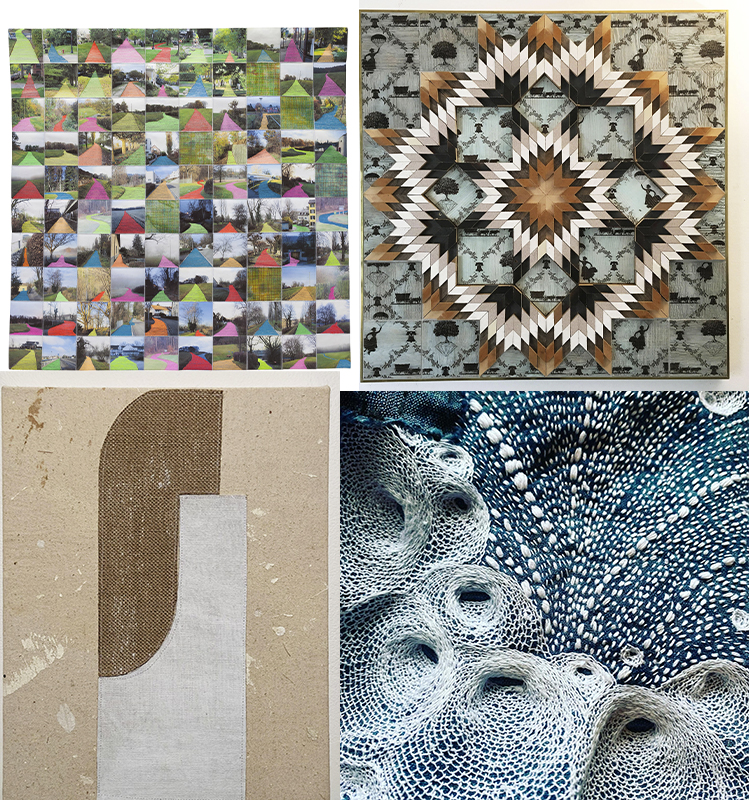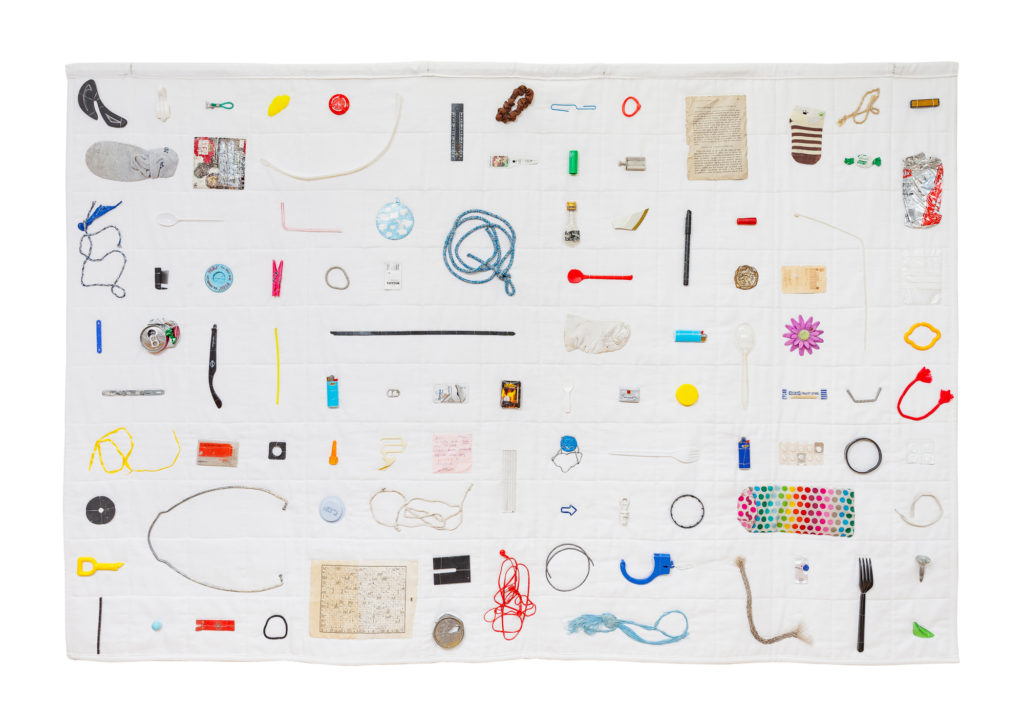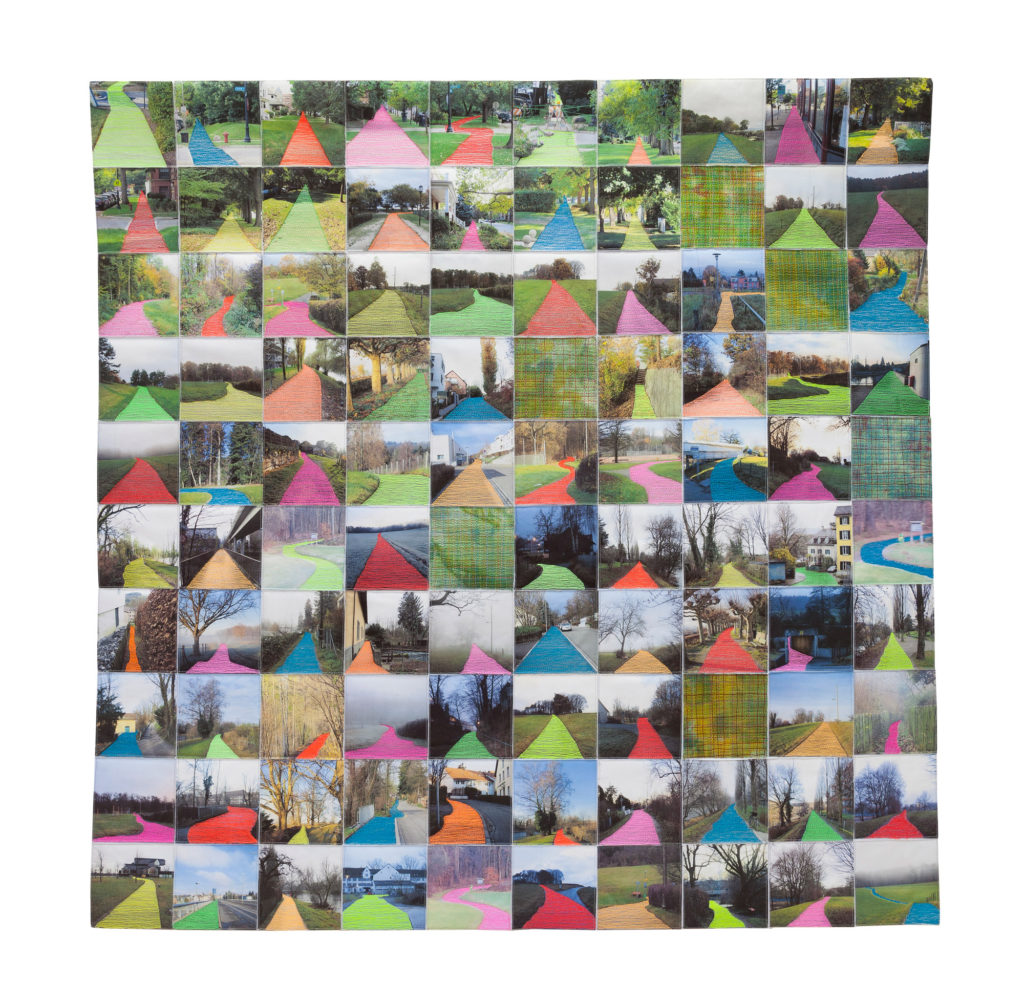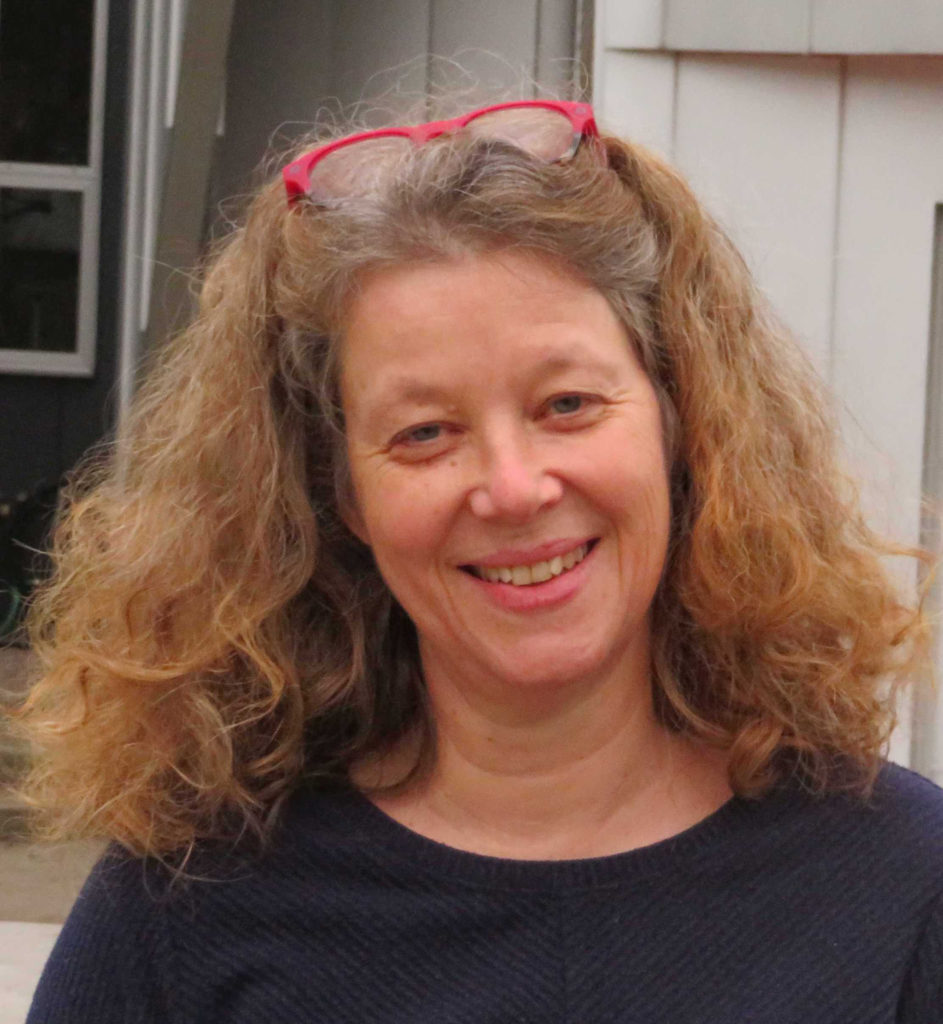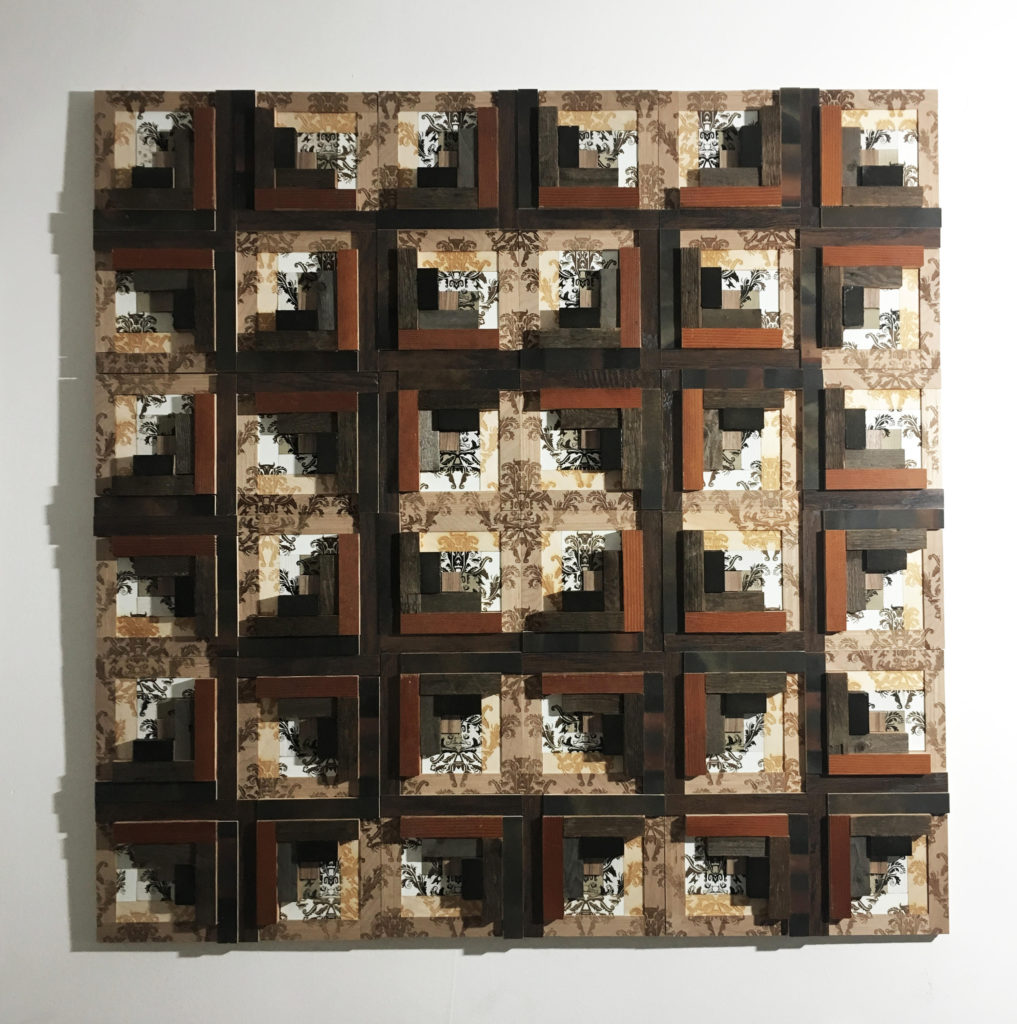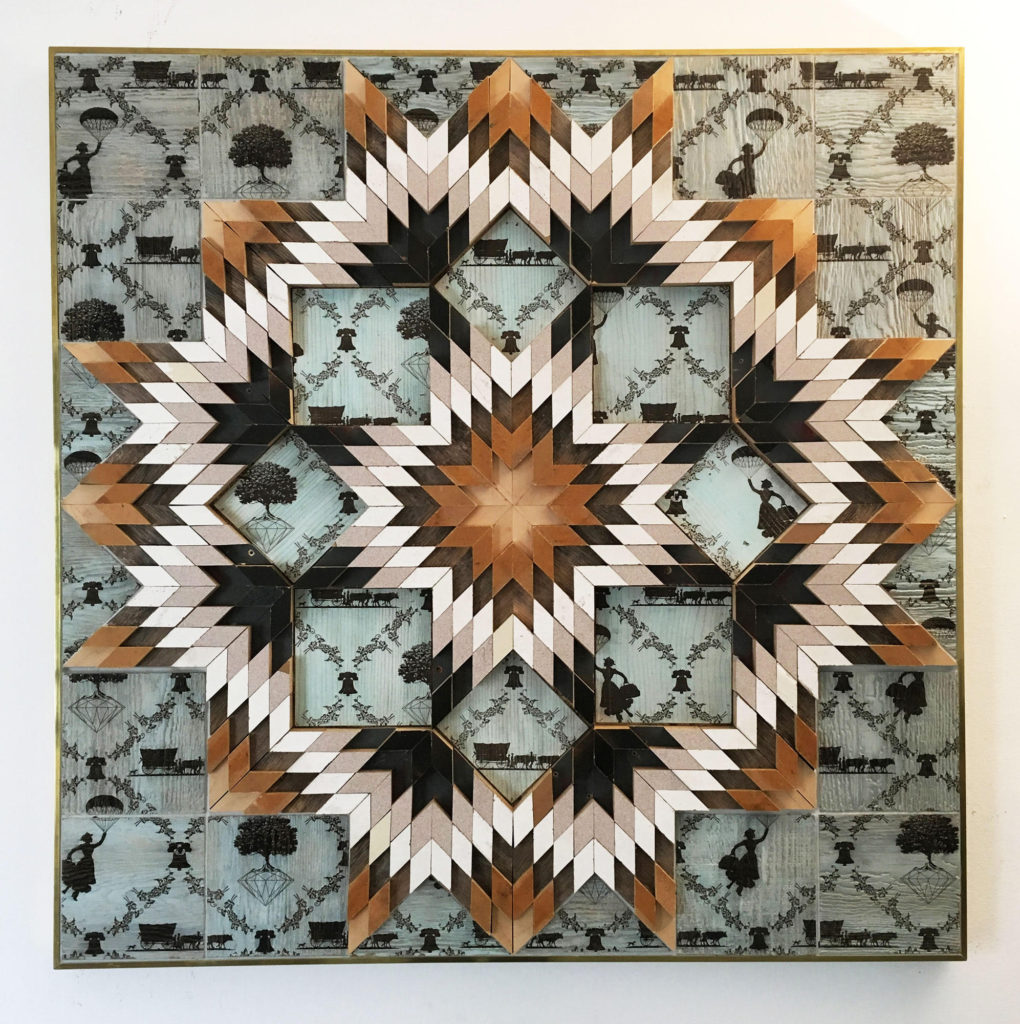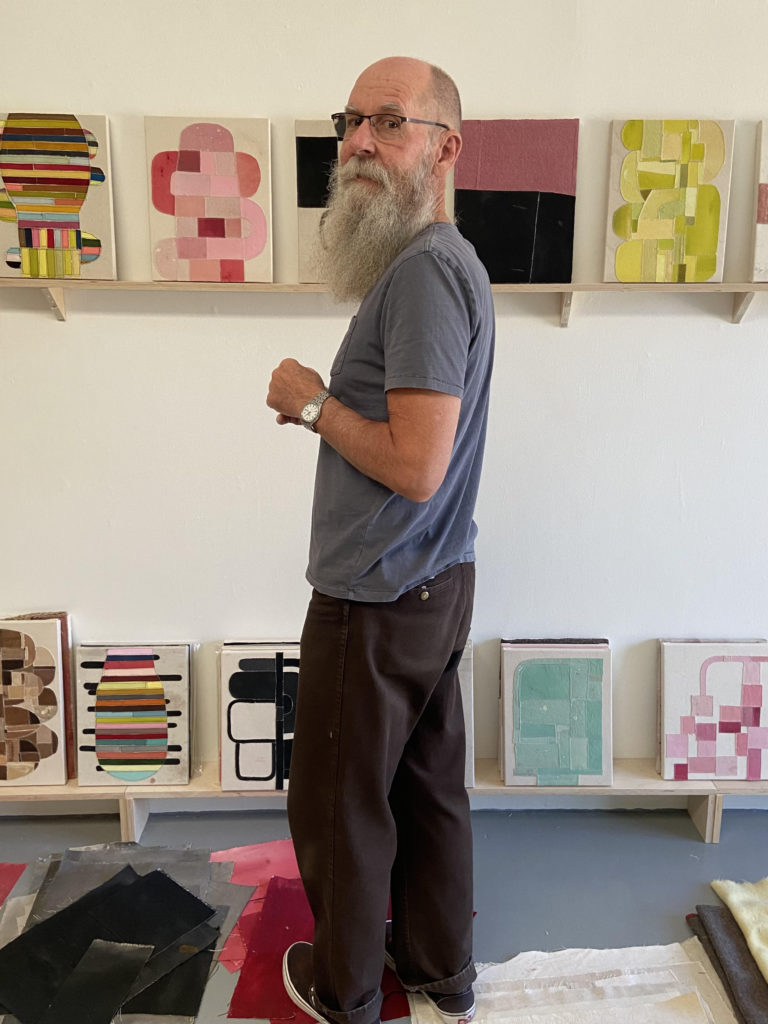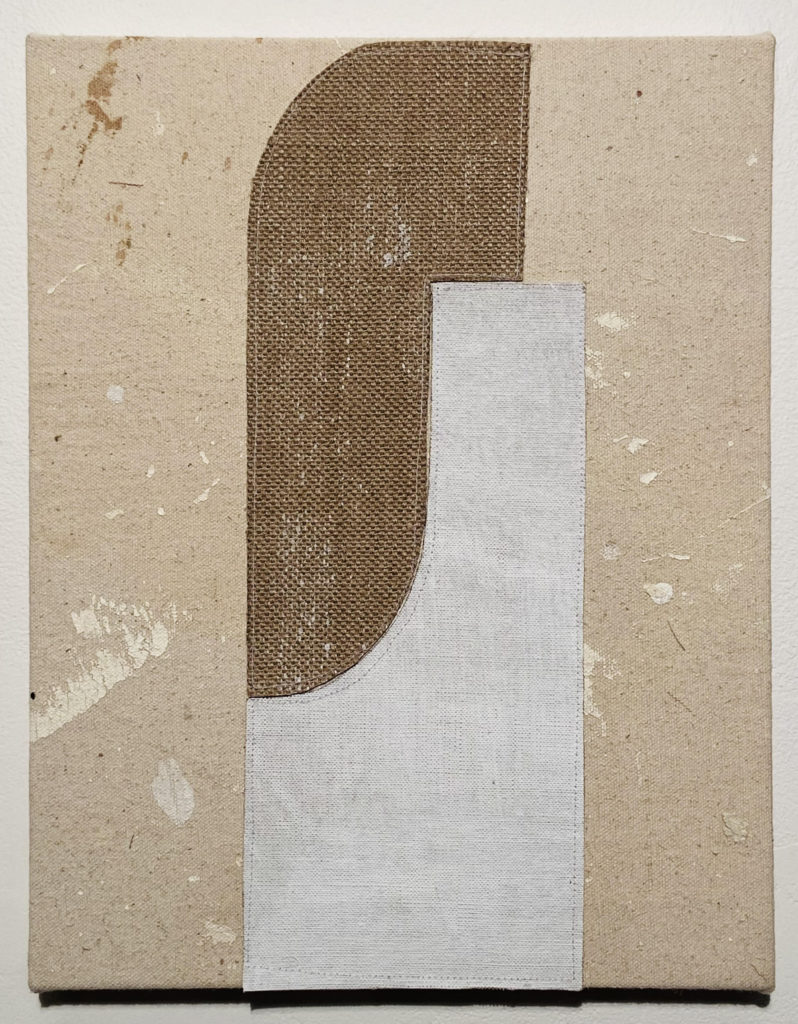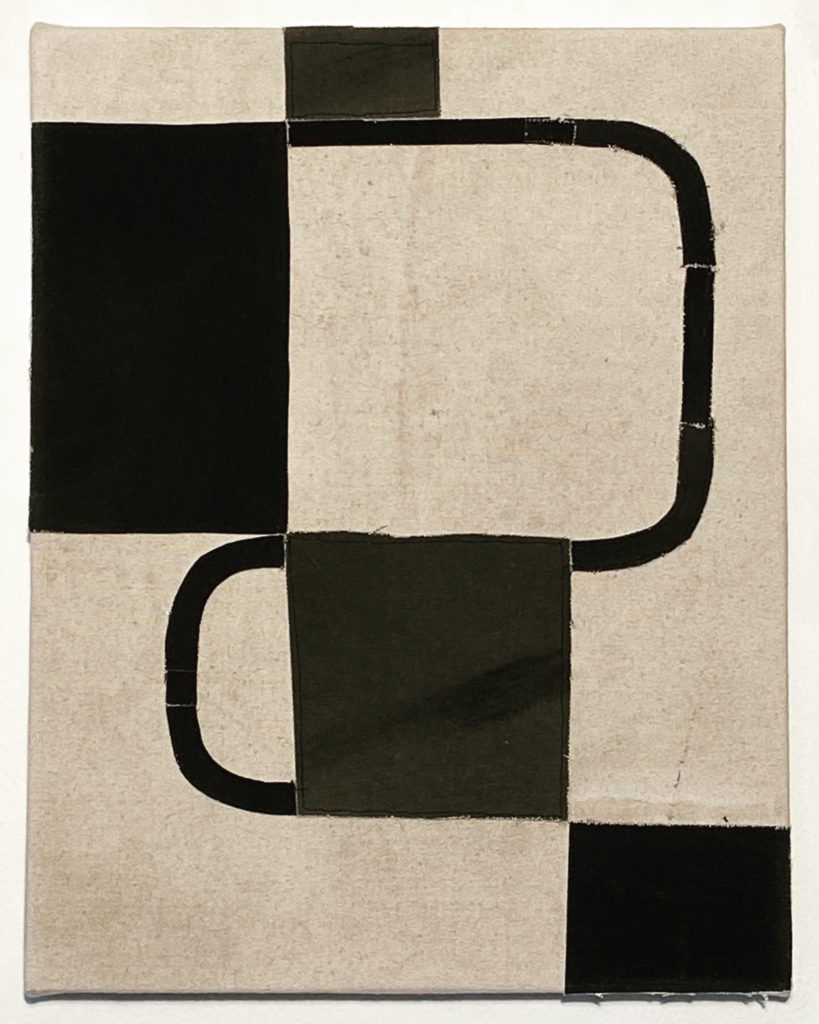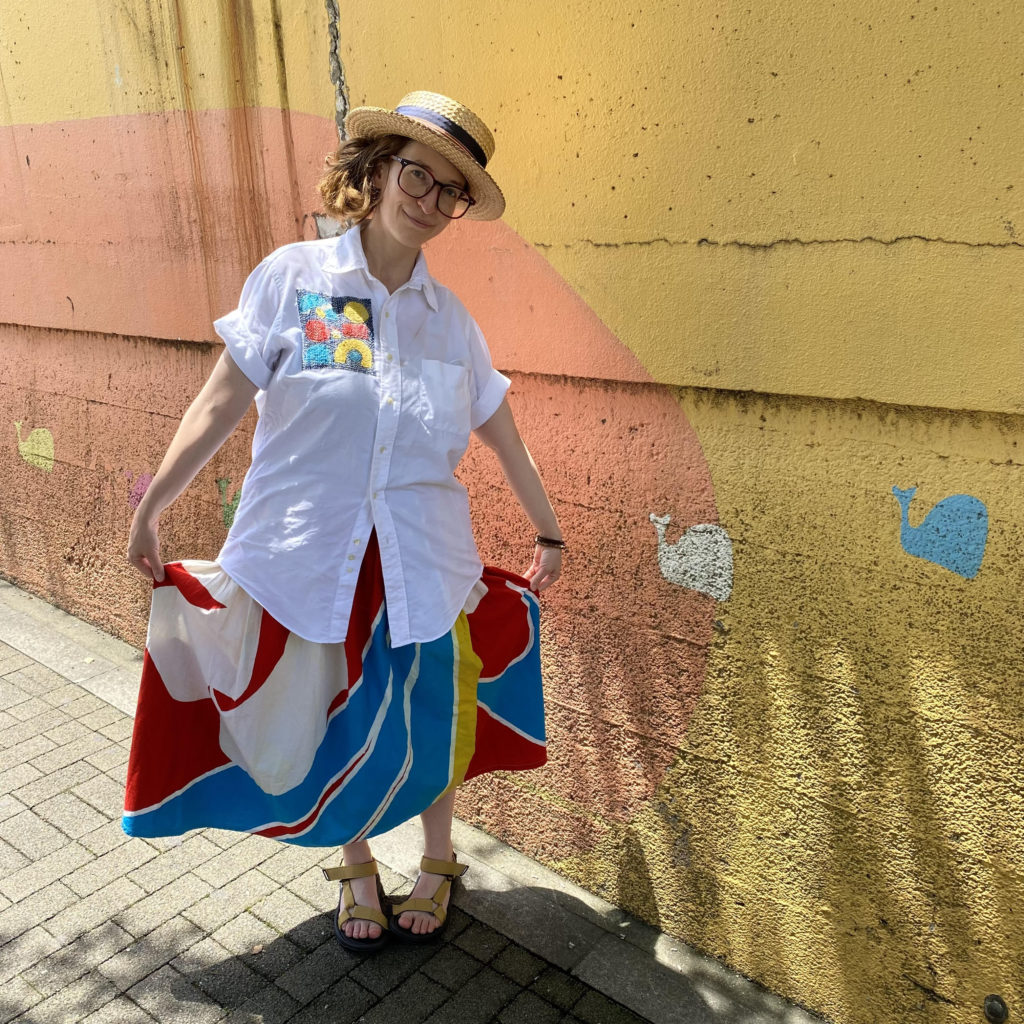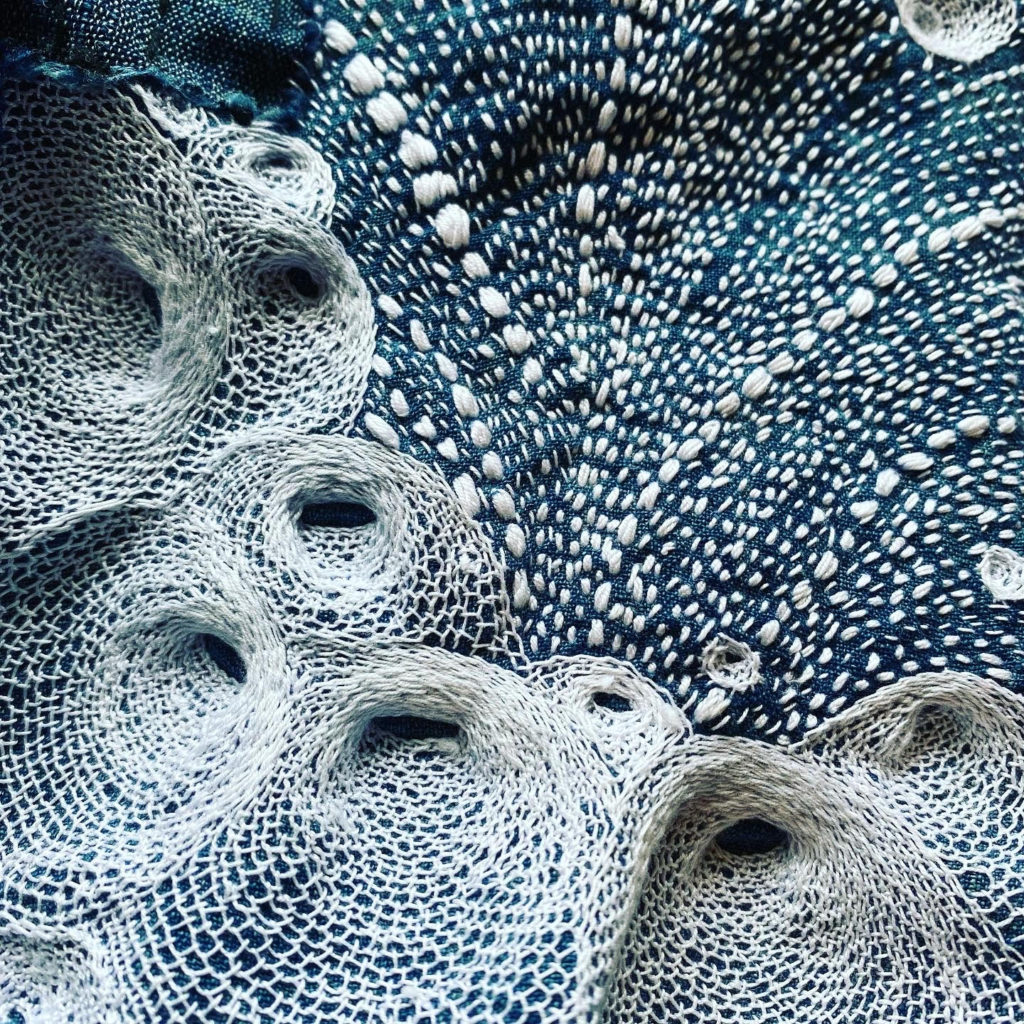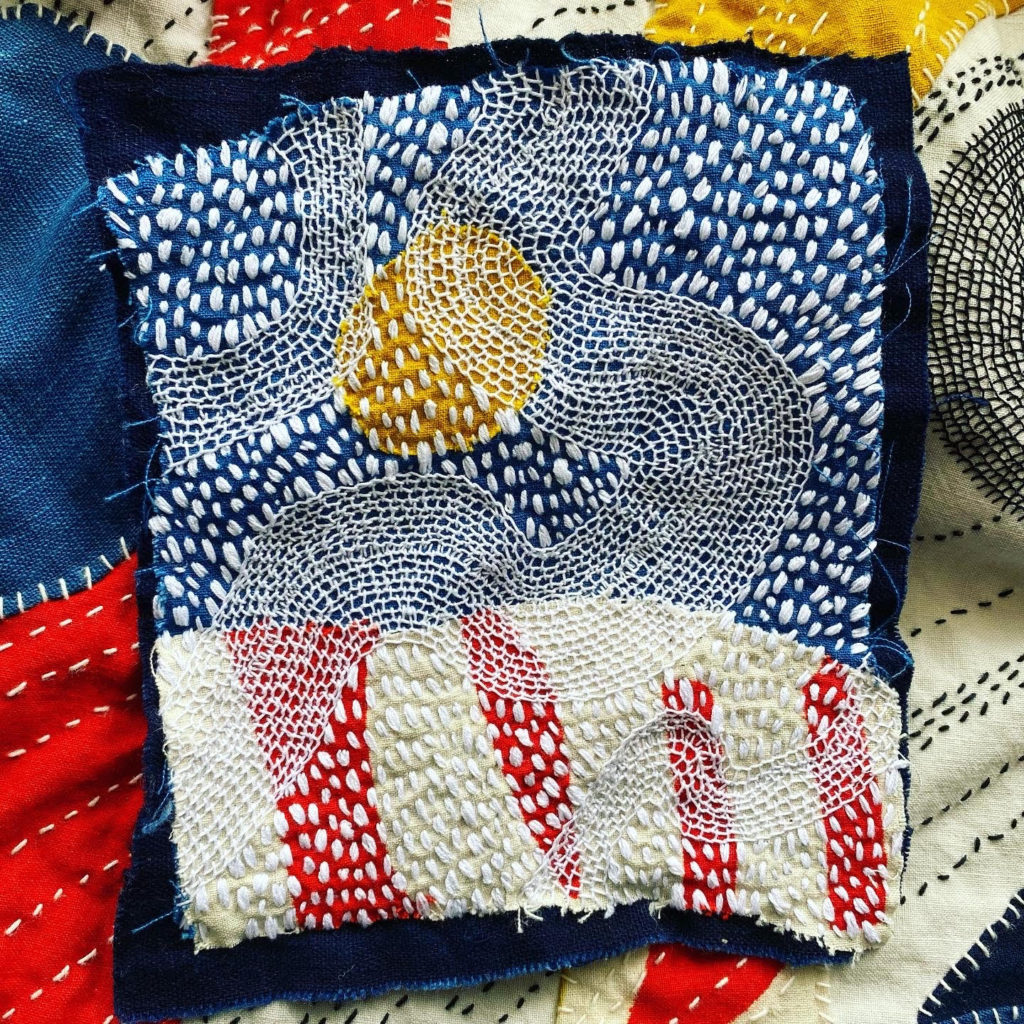In this new showcase I’m featuring four Modern Quilters that you will love!
Cécile Trentini
I have always loved painting and drawing, but as many other teenagers who dream of becoming
an artist, I was also told by my parents: “if you want to go to Art School, you have to first learn a
“decent” profession, that will allow you to earn your living…” Therefore, after high-school, I
studied at the Interpreters School in Zurich (Switzerland) and graduated with a diploma in
translation, after which I worked a few years in marketing and public relations. However, I soon
realized that climbing the career-ladder was not for me, and that I very much preferred to follow
my artistic vein.
In 1988-89, I attended the “Vorkurs” (basic year) at the “Schule für Gestaltung” (Art School) in
Zurich, and then I worked in my own studio: painting, collages, and object making were my main
fields of interest. To earn a living, I worked for a computer company teaching word processing
programs.
My three children were born between 1994 and 2000, and the days of painting were over: the
long stretches of times I needed for that technique were not available anymore. So, I became a
textile artist, at first by necessity – as this technique is more forgiving of the constant interruptions
from full-time parenting – but very quickly by conviction. I had seen patchwork pieces made by
my sister-in-law, I had studio space, a sewing machine, fabric leftovers and the intense need to
somehow work creatively. After my first textile piece, inspired by traditional patchwork but based
on my own design, I discovered a world that I quickly found deeply fascinating. This was exactly
what I had always been looking for when I was painting: I used to apply various materials (such
as plaster, sand, ashes) on my canvas to achieve different textures, seeking a sensual tactile
experience which I now found in textile materials.
So, I am a painter who replaced her brushes, paints and canvases with fabric, thread and sewing
machine. In fact, as far as sewing techniques go, I am mostly self-taught, and I have never made
a traditional quilt. I am convinced that this gives me a very different approach to textile design.
The technical aspect is only of marginal interest to me, the questions are not: “how do I sew this?
Is this sewn straight or accurately?” but rather: “how can I use fabric and thread to achieve the
visual results I am looking for? How do I get which effect? What feelings, what message does my
piece convey?”
Variety is a distinctive feature of my style: I am more the all-rounder than the specialist. On the
one hand, I am a “brain person” who loves clarity, geometric shapes, abstraction, and an
analytical approach. I am fascinated by concrete art and constructivism, which often move me
deeply. On the other hand, I am also spontaneous and intuitive, and I love to play with things that
happen “by accident”, to include serendipity in my compositions, in which spontaneous thoughts
and free associations play an important role. To be successful, a piece – be it a textile, a drawing,
or a mural – must tell a story, it must have a mood, an expression and hence it must invite the
viewers to imagine their own stories, to formulate their own associations and to experience their
own feelings.
In a new chapter of my life, love brought me to the USA, where I am now happily re-married. I
share my time between Zurich (Switzerland) and Evanston (IL) working full-time as an artist
focusing on textile, but also creating on paper, on walls, and 3D pieces.
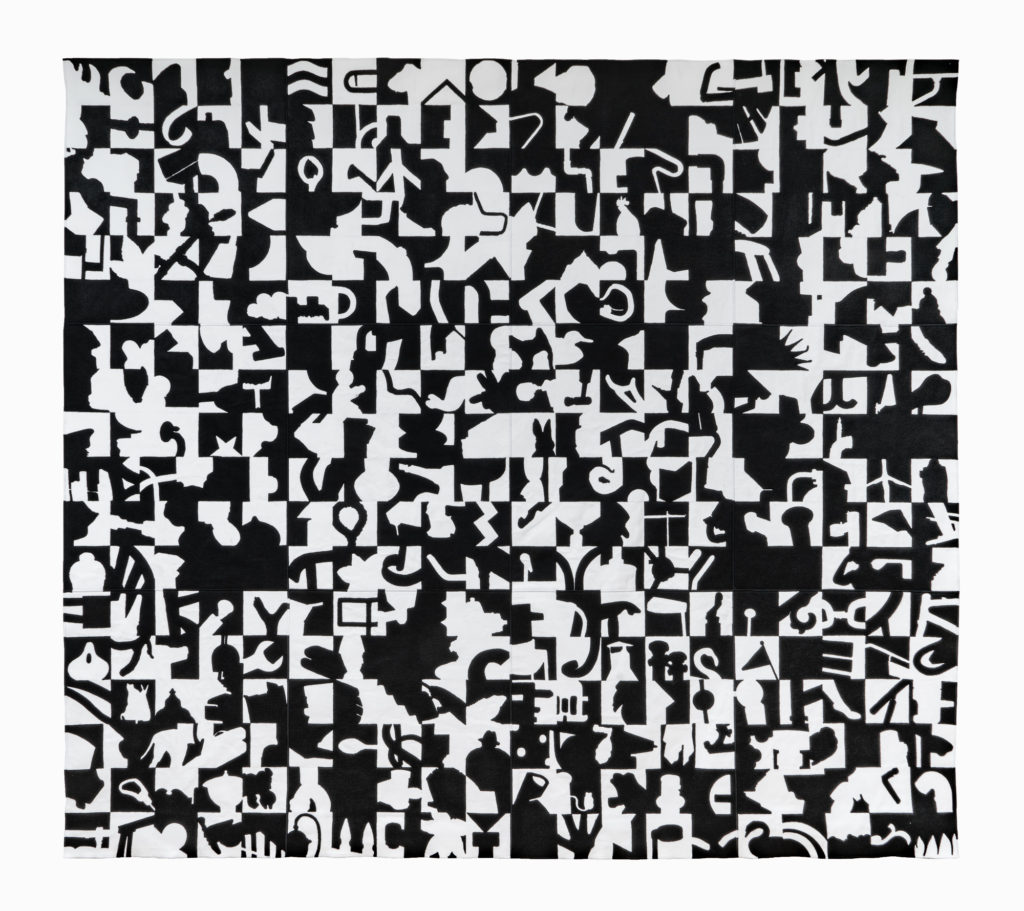
Troy Murrah
My mother was a former art teacher turned quilter, wearable artist, and VP of Education at Quilts, Inc. She, along with the rest of my family, had a huge part in my early development as an artist. I have loved drawing and creating ever since I can remember. I had a few children’s art classes and took art all through high school. My goal was to be involved in some sort of creative field once I graduated. I think my parents felt safer if I continued my education in architecture rather than going straight into art school. They probably didn’t want me to be another “starving artist”. I was in architecture school for two years before leaving and eventually finishing my college career receiving a degree in Studio Art. Initially I entered the production design world––building sets and props for dance companies, television, and film.
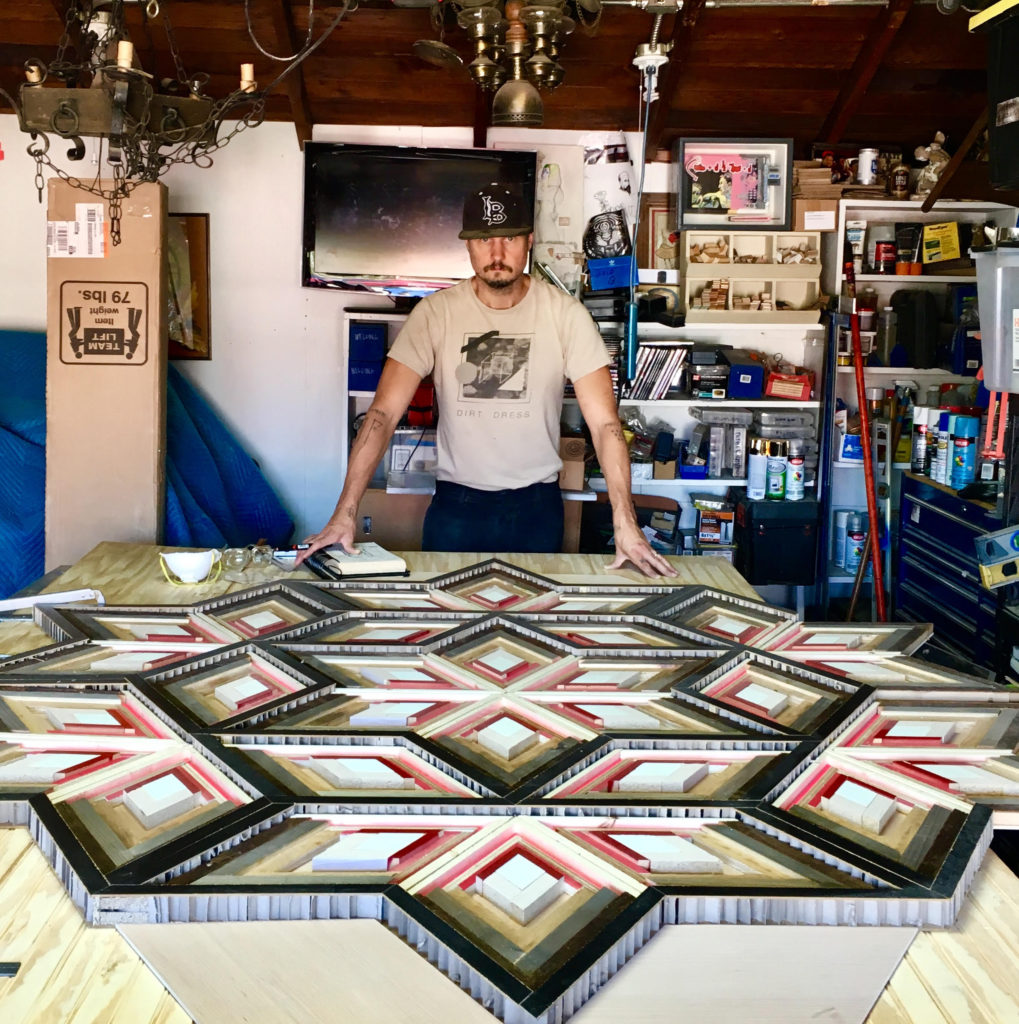
After my mother passed away in late 2017, I made a “built quilt” (a wood quilt) in her memory because she always wanted me to incorporate quilt patterns into my visual art. I found doing this came so naturally to me and it felt right. One piece led to another along with a solo art exhibit. Now, I do this full-time as an artist and run a brand with my wife, Michelle, called “Built Quilt”. I just wish my mom was still here to see what became of her influence.
I’m definitely inspired by old traditional quilts. I usually look for a block pattern I find interesting and imagine it made of wood and metal etc. I do a few sketches and then begin my building process of the piece. Almost all the material I use is found or reclaimed, so I’m also inspired by different building materials whether it’s an old furniture piece or a thrown out sheet of plexiglass. After a block pattern layout is composed I work on the drawings and designs that I will have engraved or wood burned onto the ‘built quilt’. These illustrations are inspired by a wide variety of subjects: weird life experiences I went through, medieval illuminated manuscripts, a fountain sculpture, rococo/baroque figure sculpture, wallpaper patterns, ceramic mosaics, knights stories, viking stories, love stories, fairy tales, pop culture, family history, family crests, shields, armor, company logos, team logos, sports, cars, trucks, motorcycles, subcultural references, flowers, trees, nature, architecture, music and guitars, love, and war.
Right now I’m very drawn to combining bright neons with the natural tones and wood grains of wood… or I also like combining very muted pastel tones with materials left in their natural state, for example a very light shade of mint green alongside a rusted piece of sheet metal. The vibrancy, variety, and resourcefulness of reclaimed material out there becomes a source of inspiration for me as well in terms of colors to use. It forces me to make new creative decisions much like quilters would when using scraps of fabric lying around. Since I base most of my work off of quilts, geometric shapes are very important design element for me. It’s amazing how endless the possibilities are just using combinations of these simple elements.
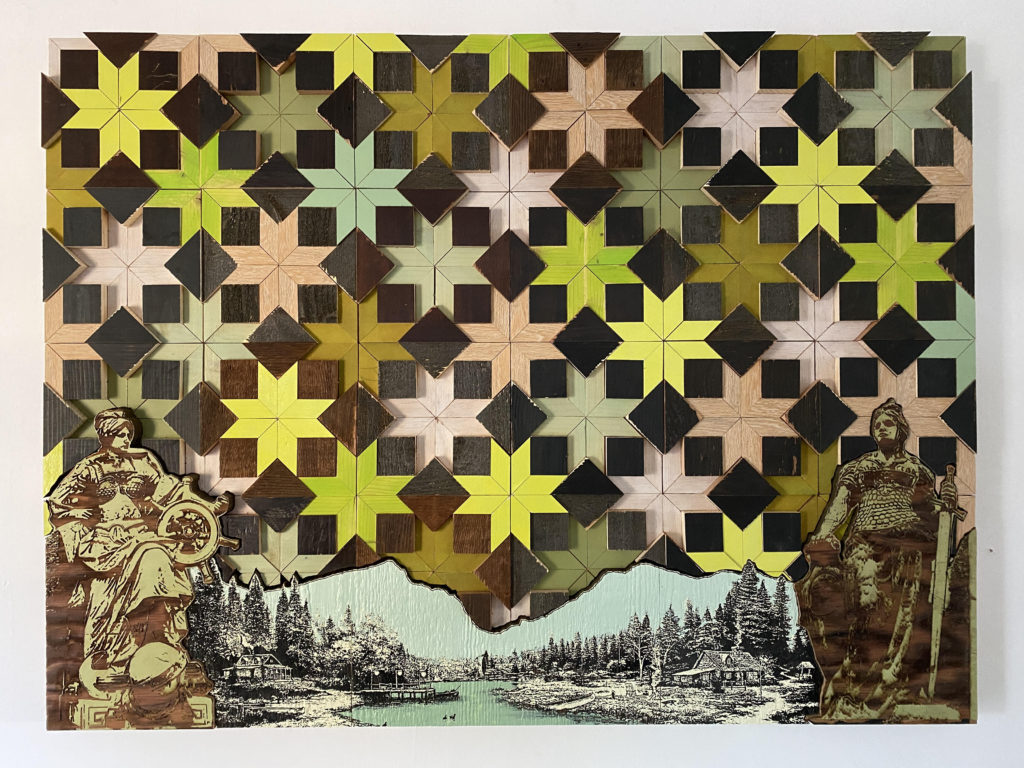
Jonathan Parker
My name is Jonathan Parker and I live in Santa Fe, New Mexico, having moved here from a lifetime in San Francisco almost 3 years ago. I am a self taught artist. I have been incorporating sewing in my work off and on for over 20 years, and for the past 6 years have been making small pieces similar to the ones you now see.
I make “sewn paintings.” These painted, cut and sewn canvas (and sometimes wool) works are created from an organic abstract geometric stance. I paint on canvas, cut out shapes, sew the shapes onto another piece of canvas and then staple onto stretcher bars.
My work includes elements of drawing, painting and more provisional approaches like mending and appliqué. I feel these small pieces rely on the material to make them shine — often beat up, used, marked canvas or fabric — and the raw or rough feeling they produce. The invented shapes are important elements in my compositions; they can be minimal or more layered and complicated, depending on where the work takes me. My default is almost always ‘less is more’ but occasionally a piece requires more than less and I just follow.
I work by intuition or feeling, using a sensibility I have developed over time to guide me, rather than my critical mind. In this way I’ve eliminated some of the internal thinking, which for me can get in the way. I do my work, one piece at a time, trying to have no expectations — just an open heart for what is to come.
Lindsey Gradolph
I arrived at embroidery in a very roundabout way. Long story short, I was the quiet child in a very loud family and while I was always described as “the creative one”, I didn’t grow up in a particularly creative household. No one taught me any sort of creative craft, although I desperately wished for someone to teach me knitting or sewing. Sewing especially, because I was thrifting even at a young age and wanted to know how to alter garments. Even though I really enjoyed painting and drawing as a hobby throughout my childhood, it was made very clear to me that it was not a viable option to support myself. So a through a series of random events and just saying yes to opportunities, I got my teaching certification and took a job teaching in Hiroshima through the JET programme.
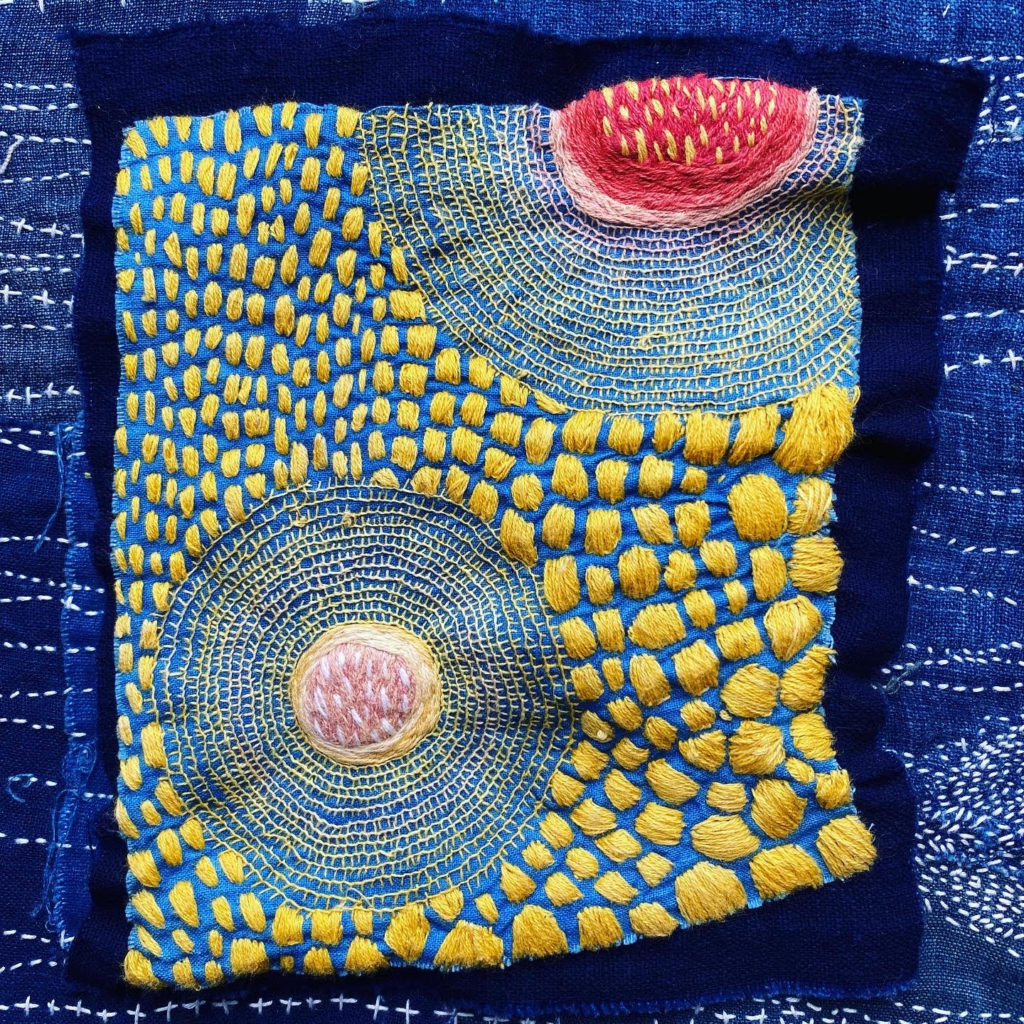
During my time in Hiroshima I briefly dipped my toe into garment making, and took up painting abstract watercolors for fun and as a way to join in on those “wine and painting” type events with friends. From that I rediscovered my passion for secondhand shopping and minimalism, which corresponded nicely with the Japanese concept of “mottainai” or “waste nothing”. Also, my watercolor and painting doodling has always been repetitive mark making, and translating that into textiles as a way to satisfy my interest in textiles and fashion was a happy discovery. I have been doing embroidery for about 6 years now, and throughout that time all my work has been on reclaimed, vintage, or even antique materials. It’s a funny blessing winding up in Japan, and having access to such a rich textile tradition.
As for my work, I really enjoy repetition and pattern, and have always really enjoyed bright, overly saturated primary colors. In my late 20s I discovered the artist Paul Klee, and will openly admit a lot of my work is inspired by his play with color and shapes. I always joke but it’s also pretty true, embroidery isn’t necessarily my passion, it’s just an excellent means to satisfy my obsession with color, shape, and line coupled with the warmth and tactilty of textiles and my personal ire with the abundance of the unnecessary textile waste in the world. I also really admire and love quilters, and how the finished object can be both functional and a piece of art. That being said, having tried to sew a few quilt tops both with a machine and by hand I have arrived at the realization that I have zero patience for precision, measurements, or for following a pattern. People look at my work and tell me that I “must be such a patient person!” and I guess in a lot of ways I am. As an educator I think it is one of my strong points, but that is definitely not the case when it comes to my own embroidery work. I am very impatient and do not at all identify with the new “slow stitch movement”, although I greatly admire it.


